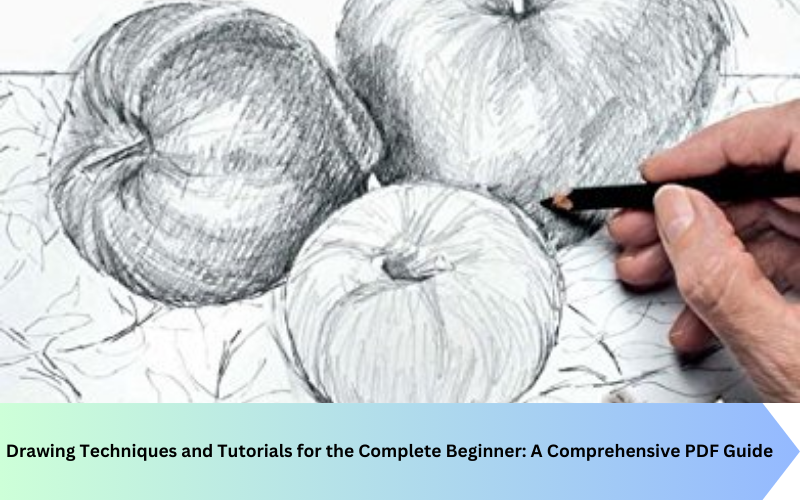Introduction to Basic Drawing Techniques for Beginners
Are you ready to unleash your inner artist? Drawing can feel intimidating, especially if you’re just starting out. But fear not! This blog post is designed with you in mind. Whether you’ve never picked up a pencil or are looking to refine your skills, we’ve got something for everyone.
Imagine being able to capture the world around you on paper—every detail, every nuance. With the right drawing techniques and tutorials, that dream can become a reality. We’ll guide you through essential skills and share resources that make learning enjoyable and accessible.
Get ready to embark on an artistic journey filled with creativity, discovery, and growth. Let’s dive into the fundamental techniques that will lay the groundwork for your incredible drawings!
Step-by-Step Drawing Tutorials to Get You Started
Step-by-step drawing tutorials are fantastic resources for beginners. They break down complex images into manageable parts, making it easier to follow along.
Start with simple shapes. Most objects can be reduced to basic forms like circles and rectangles. This approach builds your confidence as you see progress quickly.
Next, look for tutorials that emphasize different techniques—shading, perspective, or proportions. Each skill adds depth to your artistic repertoire.
Online platforms often offer video guides too. Watching someone else draw can provide insight into their methods and thought processes.
Don’t hesitate to pause the videos or revisit sections if needed. Repetition is key in mastering any new skill!
Experimenting with various styles keeps things interesting. Find what resonates most with you; whether it’s cartoons, realistic portraits, or abstract art, there’s a tutorial waiting just for you!
Essential Tools and Materials for Beginner Artists
Starting out as a beginner artist means gathering the right tools. You don’t need an expensive setup to create beautiful art.
Pencils are fundamental. A variety of graphite pencils, ranging from hard to soft, allows for different shading techniques. Consider adding colored pencils for more vibrancy in your work.
Paper is equally important. Choose sketch pads with different textures and weights suitable for various mediums like pencil or charcoal.
Inking pens can enhance your drawings too. Fine liners offer precision, while brush pens provide expressive strokes.
Don’t forget about erasers—both kneaded and vinyl types help correct mistakes effectively without damaging the paper’s surface.
Invest in a good sharpener to keep those points fine and ready for detail work. With these essential tools at your disposal, you’re well on your way to exploring your creative potential!
Common Mistakes and How to Avoid Them
Many beginners face challenges that can hinder their progress. One common mistake is rushing through the basics. It’s tempting to jump into complex projects, but mastering fundamental techniques is crucial.
Another frequent error involves neglecting proportions and perspective. Start with simple shapes to build a strong foundation for your drawings. This practice will enhance accuracy over time.
Additionally, some artists are overly critical of their work right from the start. Embrace imperfections as part of your growth process. Every piece teaches you something valuable.
Don’t overlook the importance of consistent practice. Set aside regular time for drawing; this discipline nurtures skill development and creativity alike. Remember, improvement comes gradually with patience and persistence in honing your craft.
Tips and Tricks for Improving Your Drawing Skills
Practice regularly. Set aside time each day, even if it’s just 15 minutes. Consistency helps build muscle memory.
Explore different styles. Don’t limit yourself to one approach. Experimenting can lead to surprising discoveries and personal growth in your art.
Study the masters. Analyzing works from renowned artists offers insights into techniques you might not know about yet.
Use references wisely. Whether it’s photographs or real-life objects, having something to look at can enhance accuracy and depth in your drawings.
Challenge yourself with new subjects. If you usually draw portraits, try landscapes or abstract forms instead. This keeps your practice fresh and exciting.
Don’t shy away from mistakes; they’re part of learning. Each error teaches valuable lessons that contribute to skill development over time.
Join a community or take classes for feedback and support from others who share your passion for drawing.
Conclusion
Drawing is an exciting journey that opens up endless possibilities for creativity. By mastering basic techniques and following step-by-step tutorials, you can build a strong foundation in your artistic skills. With the right tools and materials at hand, you’re equipped to explore this vibrant world of art.
It’s essential to remember that mistakes are part of learning. Identifying common pitfalls will help you grow as an artist and prevent frustration along the way. Implementing tips and tricks from seasoned artists can elevate your work significantly.
As you embark on this adventure into drawing, keep practicing regularly. Your skills will improve with time, patience, and dedication. There’s no rush—enjoy each sketch or painting you create! Embrace your unique style as it develops over time.
This PDF guide on drawing techniques and tutorials for the complete beginner serves as a valuable resource for anyone looking to dive into art. Keep it handy as a reference while honing your craft; you’ll refer back to it often as you progress in your artistic journey!





